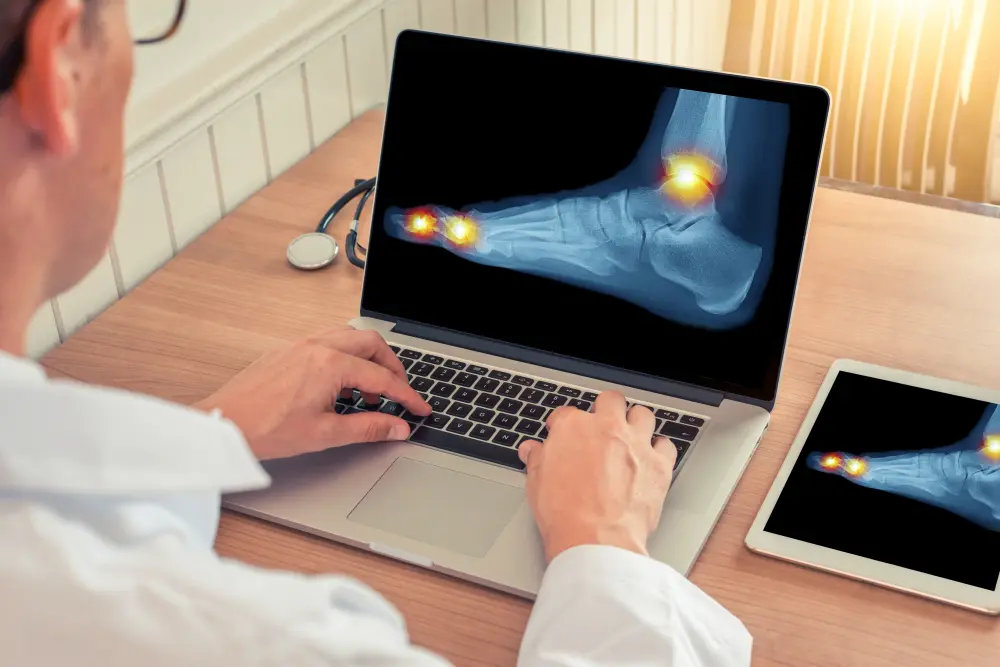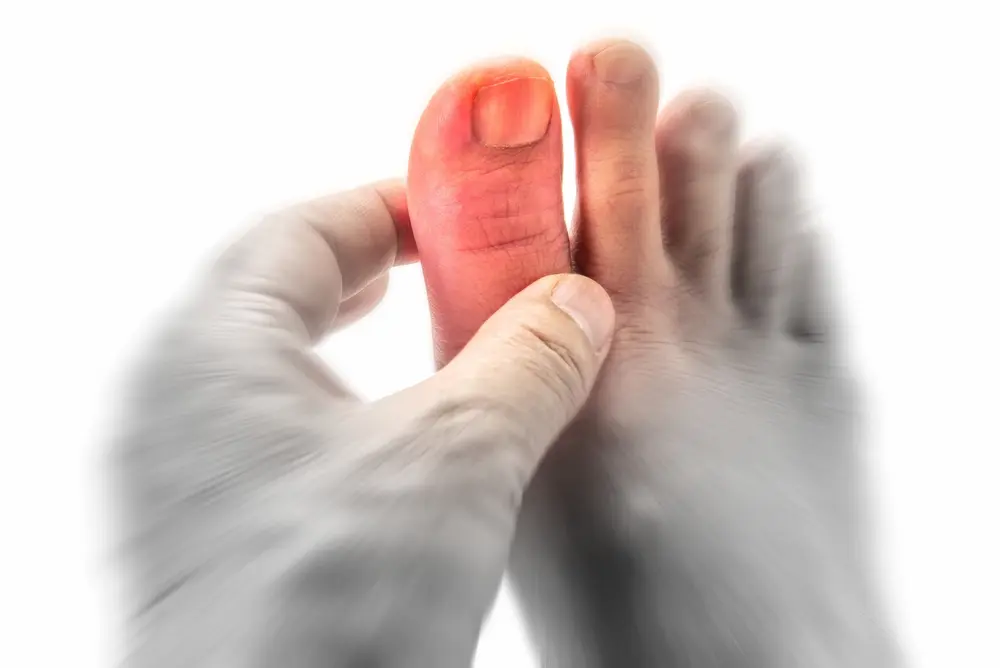
Gout pain is a sharp, intense pain that seems to appear out of nowhere. It mostly affects the big toe, though it can also occur in ankles, knees, hands, wrists, hands, fingers, or elbows. The pain is often so bad that it wakes you up at night.
If you’ve dealt with gout pain before, you know how hard it can be to manage. The usual medications may help, but they don’t always provide the relief you’re hoping for or last long enough to prevent the next attack. It’s a frustrating cycle; sometimes, it feels like there is no end in sight.
But, new clinical research is making progress in finding better ways to treat gout. Clinical trials are now looking at options that go beyond the usual medications. Scientists are trying new treatments that target the causes of gout and biologics that work with the immune system.
Gout is a type of arthritis that develops when there’s a high level of uric acid in the blood. Usually, uric acid is something your body gets rid of, but when there’s too much of it (hyperuricemia), it can start to form tiny, sharp crystals. These crystals settle into your joints, causing that sudden, intense pain.
When these crystals gather in a joint, it triggers an inflammatory response—meaning your body reacts to the crystals like they’re an injury or infection, bringing on redness, warmth, swelling, and that unmistakable sharp pain. What makes it even trickier is that these flare-ups can come and go. You might have weeks or even months without symptoms, and then suddenly, the pain comes back with a vengeance.
The National Institutes of Health notes gout is the most common type of inflammatory arthritis in adults. It affects about 8.3 million people in the US alone.

Traditional gout treatments are designed to lower pain and minimize uric acid levels, but they don’t always work for everyone, especially for those with frequent or severe flare-ups. That’s why researchers are looking at innovative treatment approaches. New medicines in development aim to address the root cause of the condition - like high uric acid levels and inflammation.
One promising approach in hyperuricemia research involves targeted therapies. These treatments focus specifically on the mechanisms that lead to gout flare. For instance, researchers are looking into treatments that can prevent the formation of uric acid crystals, which cause the sharp, intense pain you feel during a gout attack. These treatments aim to block crystal formation at the source to prevent flare-ups before they even begin.
There’s also research into drugs that block specific proteins responsible for inflammation in gout. Unlike traditional pain relievers that manage symptoms, these drugs aim to stop the inflammatory process triggered by uric acid crystals. This approach offers potential for patients who have persistent inflammation despite taking standard medications, bringing a new level of control to those with difficult-to-treat gout cases.
Another area of exploration in clinical trials is biologic treatments. Biologics are made from living cells and work with the immune system. They’re designed to “teach” your immune system to handle the buildup of uric acid better, helping reduce both the frequency and severity of gout flares. This is a fascinating option for people with recurring gout attacks who haven’t had success with other treatments.
These biologics target the specific immune responses that lead to inflammation. They aim to reduce symptoms long-term, potentially giving people greater freedom from gout pain over time.

Clinical trials also address gaps in current treatment of gout options. Many traditional medications can be hard on the kidneys, which is a concern for gout patients who may also be at risk for kidney disease. New treatments are being developed with this in mind, providing safer options for those with kidney-related complications. These trials prioritize minimizing strain on the kidneys and other organs, a critical advancement for those needing treatments that protect overall health while managing gout symptoms.
If you’re considering joining a clinical study for gout treatment, it’s helpful to know what to expect. Clinical trials are organized research studies that evaluate new treatment options under the supervision of medical professionals. Before enrolling, you’ll go through a screening process to determine if the trial is a good match for your specific needs and health conditions. Unlike standard medical visits, health insurance is not required for many clinical trials, as the study typically covers treatment costs.
During the trial, you’ll be closely monitored, which means you’ll have regular check-ins and follow-up appointments to track your progress and evaluate how well the treatment works. This level of monitoring gives you the chance to benefit from new therapies while receiving specialized care. Participants may receive either the experimental treatment or a placebo, depending on the study’s design, but regardless, you’ll be contributing to research that could bring lasting change to gout treatments.
Clinical trials help advance gout treatments beyond temporary pain relief. Through these studies, researchers can gather valuable insights into how well new therapies work, what side effects might occur, and how safe they are for different types of patients. These findings are then reviewed by institutions like the Food and Drug Administration (FDA) before new treatments are made widely available. For those with chronic or challenging gout, these research studies offer a glimpse of hope for a better quality of life in the future.
As these innovative treatments continue to be tested, the future of gout care looks brighter than ever. The clinical research underway has the potential to reduce the intensity of gout flares and prevent them from recurring altogether, bringing genuine hope to those struggling with challenging cases.If you’re curious about joining a clinical trial, it’s worth exploring the options available through Science 37. We’re seeking volunteers with Tophaceous Gout to participate in a paid, interventional research study. Signing up for a Science 37 clinical trial allows you to be part of something meaningful, making long-lasting treatments accessible to others facing the same battle.


